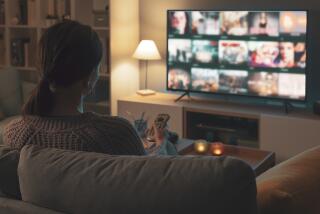Consumers are cutting the cable TV cord but not for Internet
- Share via
For the last year, top cable television industry executives have dismissed the idea that consumers are cutting the cord and opting to get their content online.
But it turns out they’re right. Consumers are cutting the cable TV cord, but not for the Internet. Instead they’re signing up with satellite operators and phone companies offering the same services.
According to a new study released by Nielsen, the media research company that tracks television viewing trends, 91% of U.S. TV households had a subscription service in the first quarter of 2011. Of the total households, 53.8% had cable subscriptions, while 30.2% had satellite television and 6.7% used a service from a telephone company such as Verizon FiOS. The rest didn’t subscribe to any TV service. That is about flat with the first quarter of 2010. However, both satellite and telecom video distribution services saw growth, while cable fell by almost 2%.
Although that 91% figure is reassuring to multichannel video programming distributors, there are clouds on the horizon.
The Nielsen study warns that younger Americans are spending an increasing amount of time watching content online. Children ages 12 to 17 spend a third of their time on the Internet watching video. The largest group watching content online are adults 35 to 49. By ethnicity, Asians watch far more video online than do whites and other ethnic groups.
Concern about competition and the economy starting to pose a threat to the cable industry is a theme at the National Cable & Telecommunications Assn.’s annual convention this week in Chicago. At a panel filled with top industry executives, there was acknowledgment that the gravy train of subscriber fees is not a sure thing.
“There clearly is a growing underclass of people who can’t afford the services they want. It would behoove all of us to work together to meet the needs of that population,” said Time Warner Cable Inc. Chief Executive Glenn Britt. “Most of the people want everything, but not everyone can afford it.”
Television remains the dominant platform, and the average consumer spent 158 hours and 47 minutes a month watching TV in the first quarter, an increase of 22 minutes from a year earlier.
Nielsen said African American households continue to watch the most television, 212 hours and 53 minutes a month. Whites are next with 155 hours and 33 minutes, followed by Hispanics with 135 hours and 42 minutes and Asians with 100 hours and 25 minutes.
More to Read
Inside the business of entertainment
The Wide Shot brings you news, analysis and insights on everything from streaming wars to production — and what it all means for the future.
You may occasionally receive promotional content from the Los Angeles Times.










